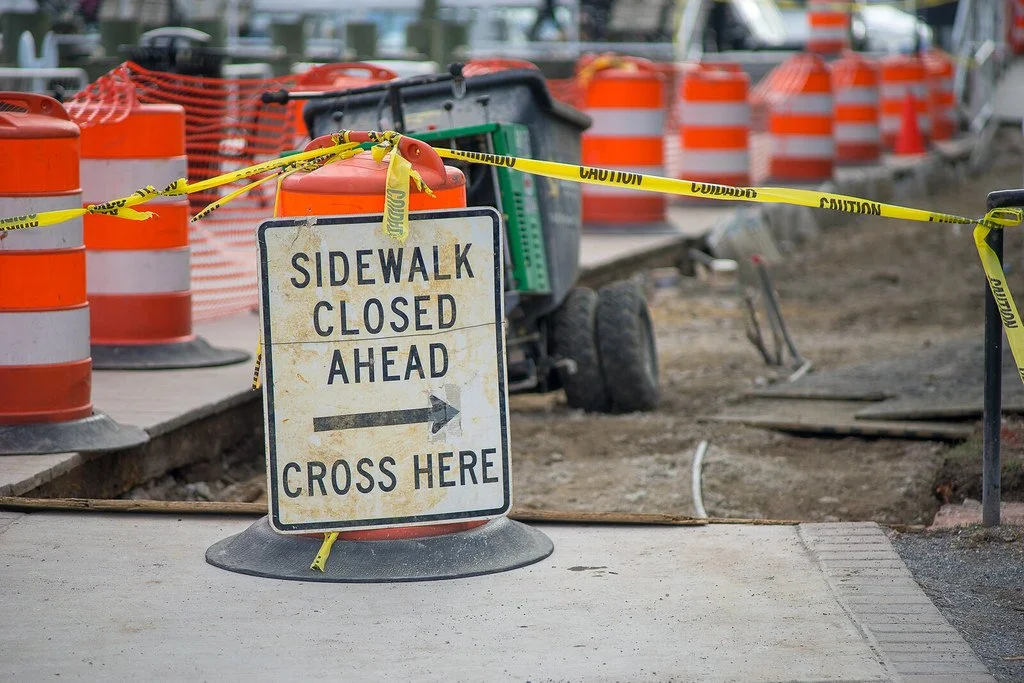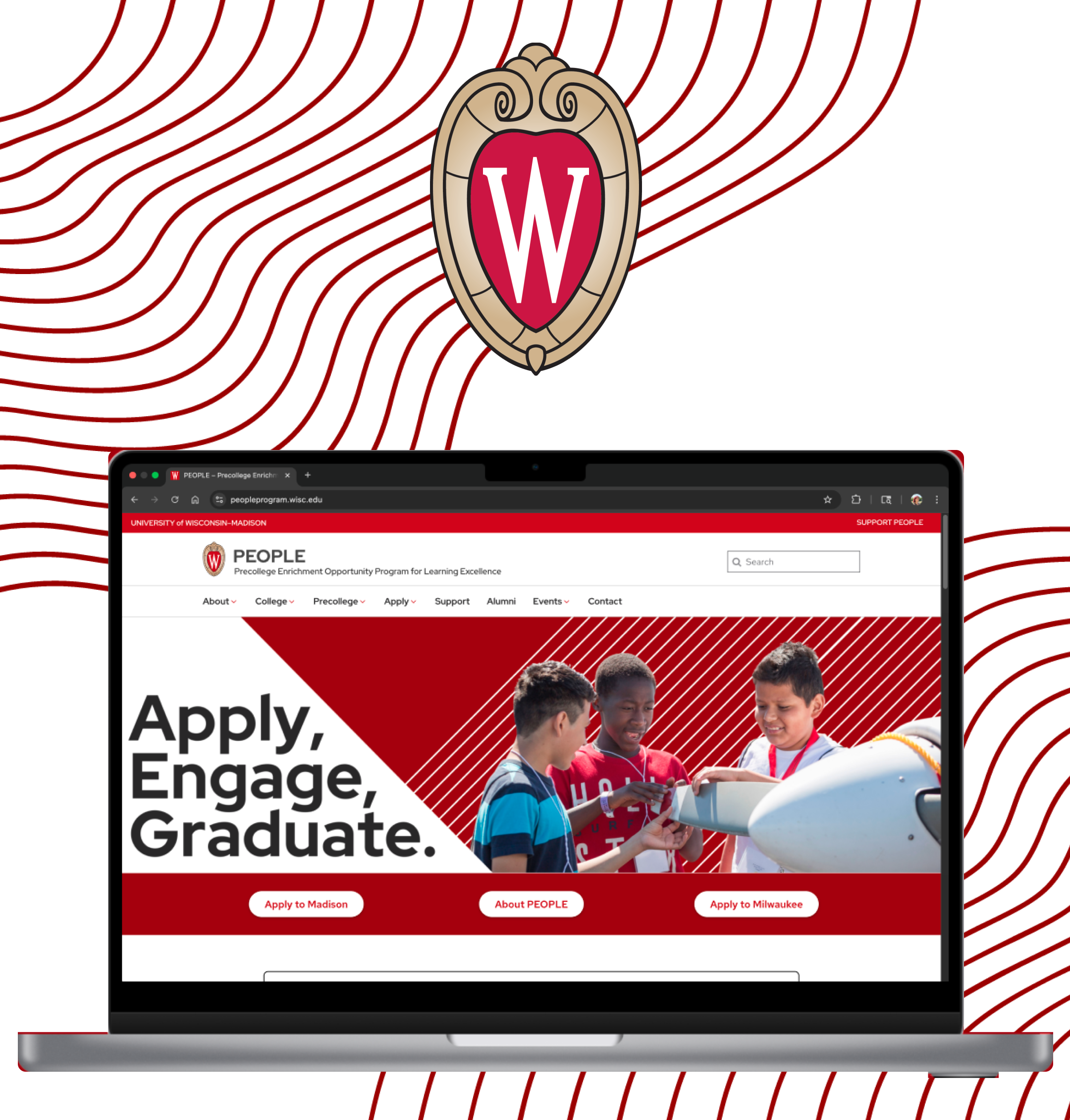
UW Access
During my studies at UW-Madison, I researched and designed an accessible navigation application for students with mobility issues on campus.
Duration
1 month
Role
UX Researcher + Sole UX/UI Designer
Toolkit
Figma + Adobe Illustrator
INTRODUCTION
Problem + Goal
What’s the problem?
Students with temporary or permanent mobility challenges need a reliable and stress-free way to navigate campus so they can focus on their education and get the most value from their experience at UW–Madison.
What’s the goal?
The goal is to create a hi-fidelity app prototype that offers our audience an improved way to navigate campus with features that target accessibility pain points.
DISCOVER
My Design Framework: Double Diamond Method
For all designs, I try my best to follow the Double Diamond Method since it offers a balance of research and design. Shoutout to my Design & Business Professor, Giustina Parisi, for introducing me to this method!
DISCOVER
DISCOVER
DISCOVER
Secondary Research
Before talking to any students or staff, we wanted to know what was already out there for navigation tools and to what extent the university was helping.
We found a lot of resources, but many were outdated, hard to use, and unrealistic for many students.
DISCOVER
Talking with Faculty + Students
“I had to search the building for other working elevators. If there are none, I am able to do some stairs very slowly, painfully, and exhaustively.”
-Student with mobility disability
“We offer guided tours for students with mobility issues that have an interest in attending UW, but they often decline after they see our campus and our current set of resources.”
-Gwynette Hall, Mcburney Assistant Director
“The bus says to allow for a 15 minute window on either end of arrival/departure. I had classes that were back to back and so I could not wait for a bus that would maybe show up on time.”
-Student with mobility disability
Results from Surveying Students
of students surveyed experienced construction blockages
of students surveyed experienced construction blockages
of students surveyed struggled with getting to class on time due to external issues
DEFINE
DEFINE
DEFINE
Understanding Who We Are Designing For
Creating user personas + user journey maps to empathize with our audience & get closer to our core insights.
DEFINE
Turning Data into Core Insights
Students struggle to navigate and understand campus access routes.
Students face challenges with scheduling the disability shuttle and its unreliableness.
Students get frustrated when elevator outages or construction block their routes and delay their journey.
DEVELOP
DEVELOP
DEVELOP
Creating Solutions for Users
The app will let students to find an accessible route to their destination with minimal effort.
The app provides students with a simple way to schedule a ride with the campus disability shuttle.
The app alerts users to route blockages and automatically adjusts their path.
DEVELOP
Ideating with Wireframes & Userflows
While referencing back to the user personas and maps, I laid out potential user flows I could follow while designing to ensure the final prototype would solve the pain points listed above.
User Flow 1: Use the app to find an access route from sterling hall to van vleck hall
User Flow 2: Use the app to book a ride with the disability shuttle
User flow 3: Use the app to view construction blockages in your area
DELIVER
DELIVER
DELIVER
Turning Wireframes into a Low-Fi Prototype
After choosing the key wireframes needed for the design, it was time to bring it to life and refine the designs in Figma.
DELIVER
Testing Designs
I did two rounds of unmoderated usability testing with 3 participants for each round. Below is some feedback on both rounds.
DELIVER
Key Screens
Below are some hi-fidelity mockup screens of the UW Access application.
DELIVER
Highlighted Feature: Navigating Access Routes
Access routes are paths created by the university to help students avoid inaccessible roads/sidewalks (i.e climbing a steep hill). These paths are extremely helpful, but are only accessible in PDF form.
Those routes are implemented into the app below for an easier navigation process.
DELIVER
Highlighted Feature: Disability Shuttle Scheduling
The disability shuttle is another resource offered by the university but can only be scheduled via phone call. Yet again, super important resource, but difficult to use.
In the UWAccess app, users can get approved for the shuttle through the university and book a ride with ease.
DELIVER
Highlighted Feature: Route Alerts
Students, with or without mobility issues, experience blocks when getting to their destination’. Route Alerts will notify the user of any issues that may affect their trip and reconfigure their routes if necessary.
Alert types are based on user interview data:
Construction Alerts
Weather Alerts
Elevator Alerts
Self-Reported Alerts by User
WRAPPING UP
WRAPPING UP
WRAPPING UP
Final Prototype
Watch demo to see the hi-fidelity prototype in action! The demo features how a user could find an access route and use the app to navigate campus.
WRAPPING UP
Reflection + Challenges
1-month timeline
With just a month to complete this end-to-end project while balancing other classes and work, time management was key. The discovery phase took longer than expected, leaving only two weeks to design the full app. To stay on track, I built a detailed schedule outlining tasks and deadlines, shared it with my instructor for accountability, and followed it closely—allowing me to finish the project strong.
Staying True to User Needs
Because this project centered on accessibility, I had to be intentional about avoiding personal bias. It was tempting to think, “What would I want?”, but I reminded myself that I wasn’t the user. Creating personas and building empathy through research helped me form key insights that guided my design decisions. Whenever I felt unsure, I revisited those insights to stay grounded in real user needs and feedback.
MORE CASE STUDIES
MORE CASE STUDIES
Explore Other Case Studies











